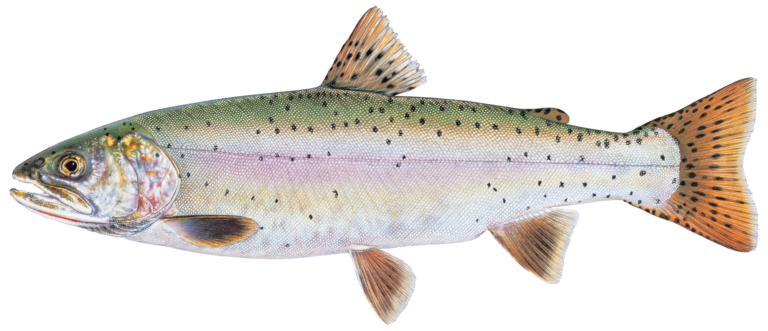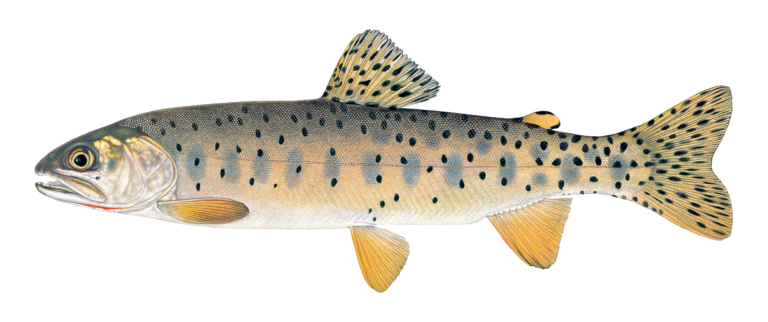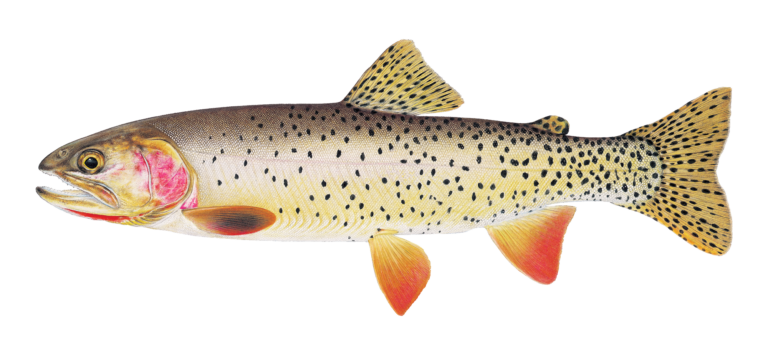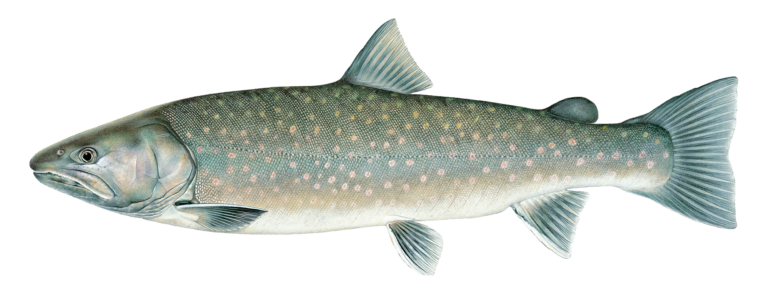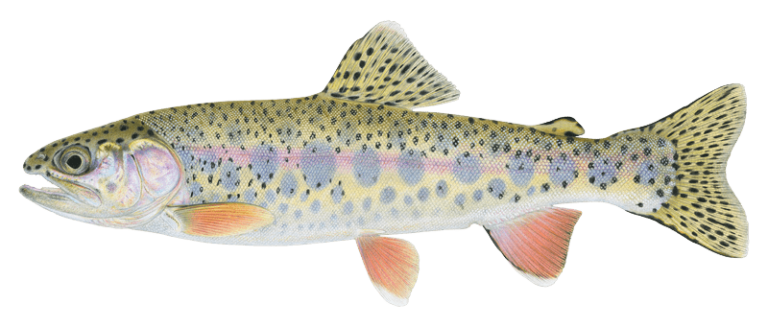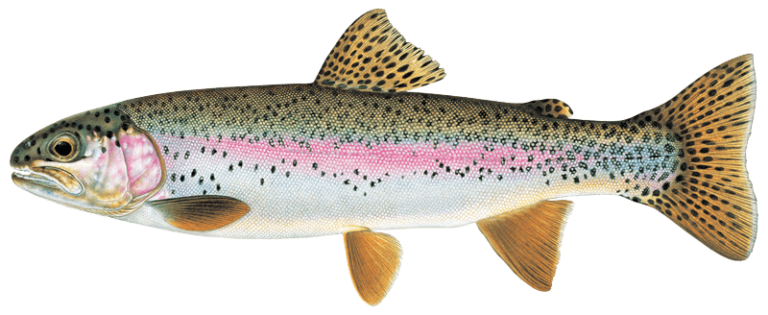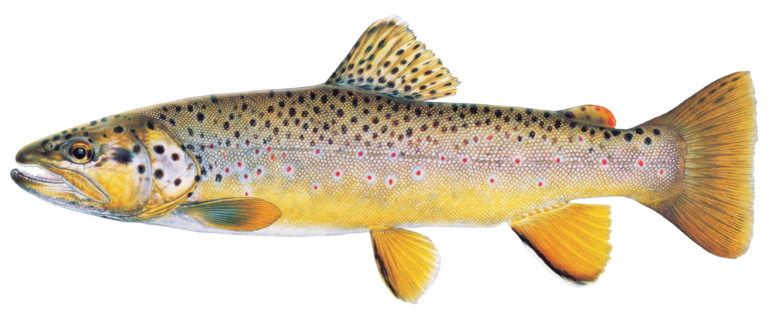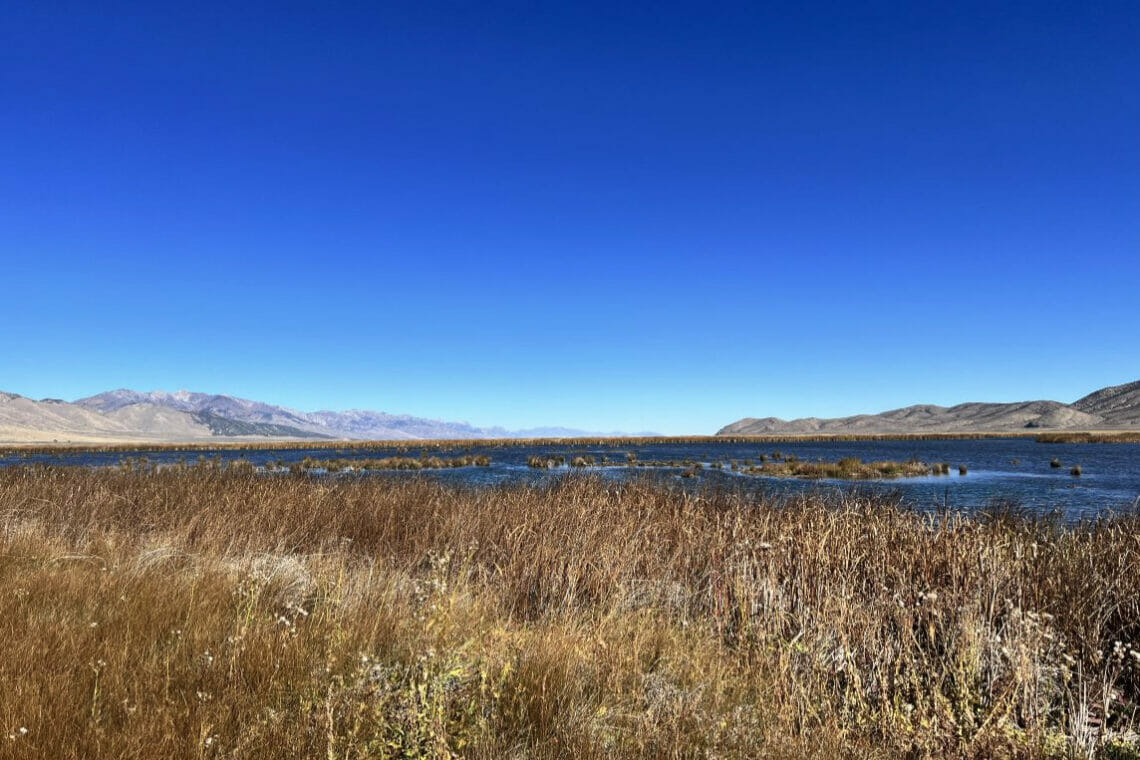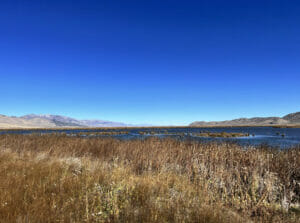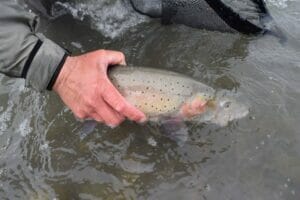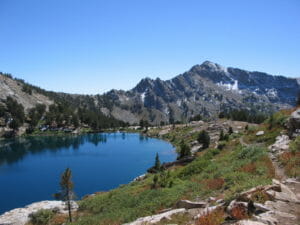Nevada

Overview
From the Ruby Mountains to the outdoor recreation mecca of the Truckee River, Nevada’s 56 million acres of public lands are filled with diversity and beauty. Though it is known as the driest U.S. state, Nevada is home to the variety of trout native to this rugged landscape: Bonneville cutthroat, Yellowstone cutthroat, bull trout, Columbia River redband trout, and Nevada’s state fish, the oldest lineage of cutthroat trout, the Lahontan. Only 71 self-sustaining populations currently exist in approximately 10.5 percent of the historical Lahontan habitat. Beset by mining, logging, and grazing to water diversions and the introduction of non-native species, Nevada’s waters and native fisheries are in a degraded state. We are working across Nevada to tackle the array of obstacles standing in the way of native trout recovery and healthy, intact ecosystems.
Threats & Opportunities
Degraded habitat and non-native species are major threats to the native trout of Nevada. Like many states in the West, the state faces water shortages, smaller snowpacks, and warming temperatures due to climate change. Many plants and wildlife living in arid areas are already near the limits of what they can tolerate. The work that TU and our partners are doing to restore habitat helps make Nevada’s native trout waters more resilient to climate change. Our work on Lahontan cutthroats serves as a benchmark for science that can be replicated throughout the country to recover wild trout.
How We Work
Reconnection
Reconnecting creeks and rivers to their floodplain will not only serve the diverse aquatic life in Nevada, but it will show current and future generations what is possible in the driest state with just a little bit of work.
Wild Trout Recovery
TU is currently in the driver’s seat on the science behind recovering Lahontan cutthroat trout in Nevada. Our tools and expertise guide management agencies and ensure the best possible outcomes by providing the most relevant information on wild trout recovery. The work done in Nevada is a benchmark for the science that can be replicated throughout the country to preserve and recover wild and native fishes.
Advocacy
We’re working with our congressional representatives to protect the Ruby Mountains and other public lands in Nevada from irresponsible oil and gas leasing practices.
How You Can Help
Learn more about the Lahontan cutthroat trout and how we are working to recover Nevada’s state fish.
WATCHFollow us on social media to learn about our work in Nevada and how you can help.
Nevada Conservation Team
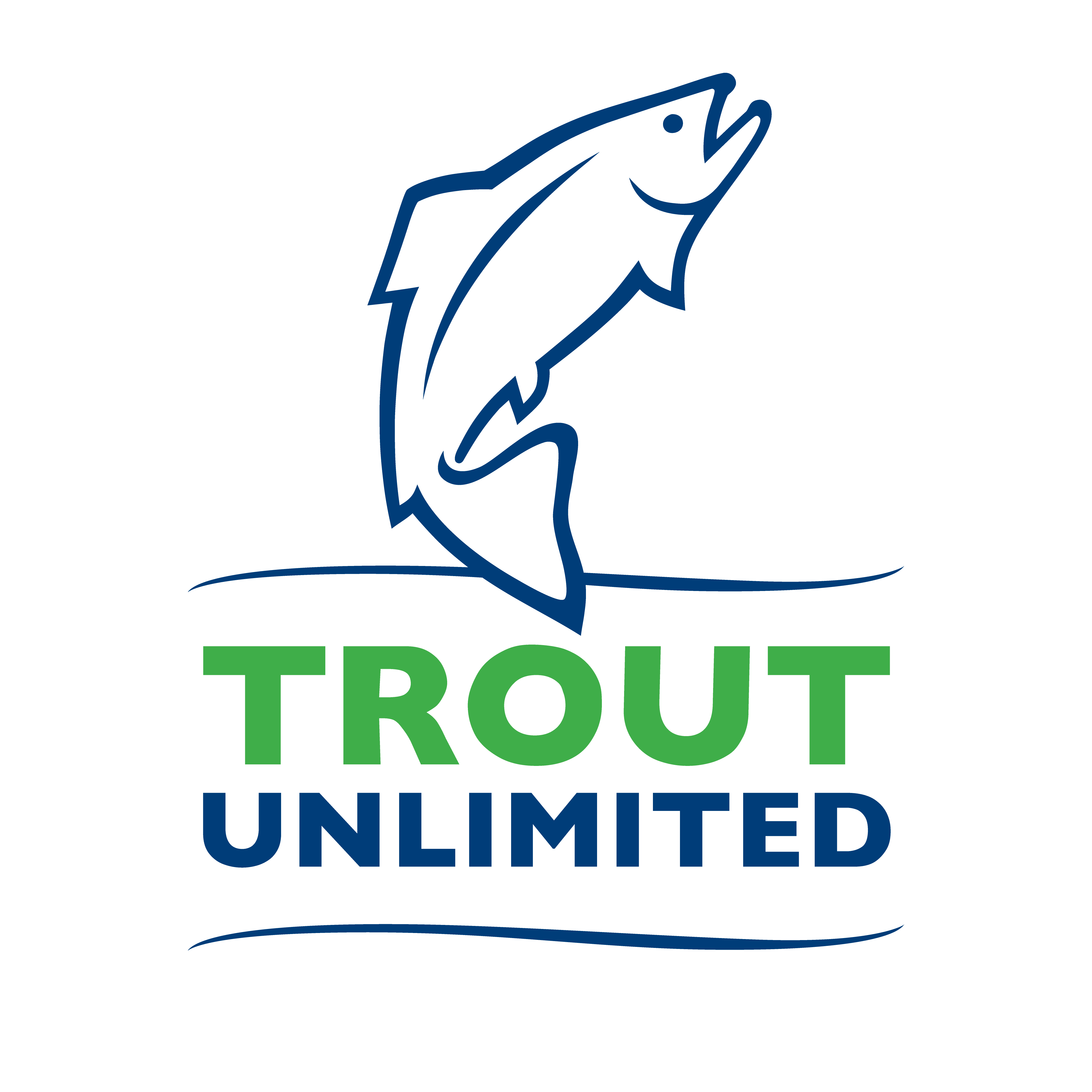
Emily Olsen
Vice President, Rocky Mountain Region
emily.olsen@tu.org
Vice President, Rocky Mountain Region
emily.olsen@tu.org
Priority Waters
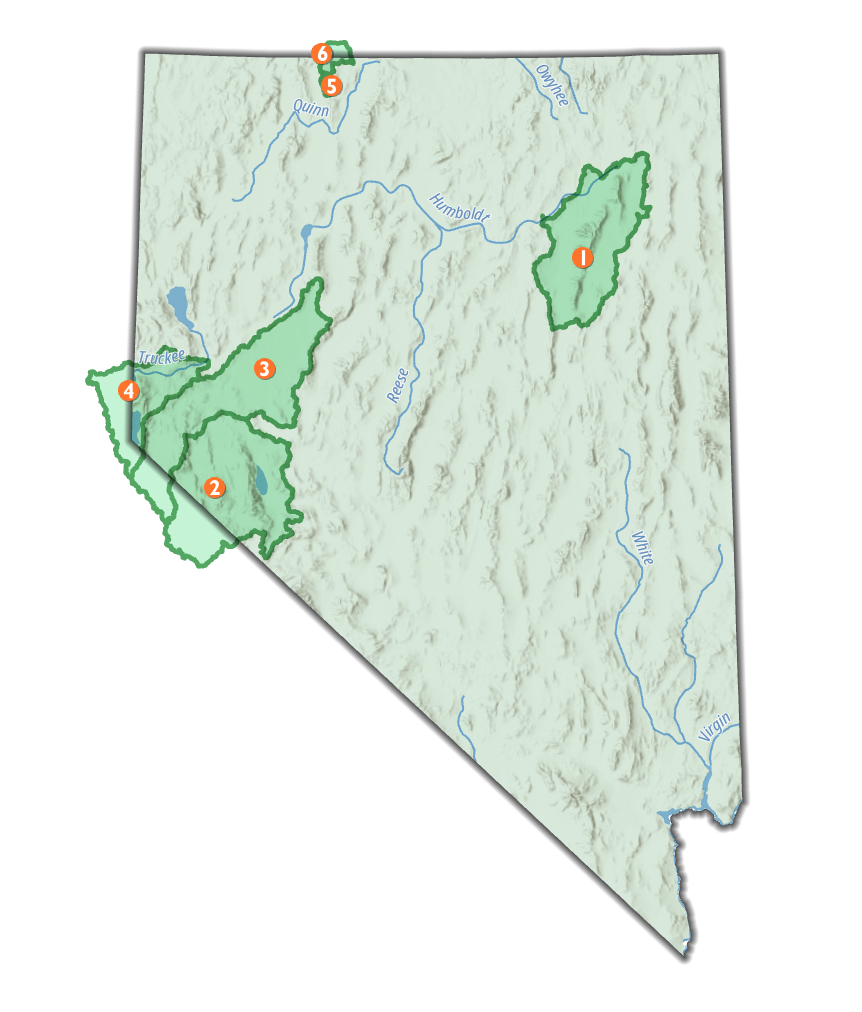
-
Ruby and East Humboldt Mountains
Sometimes called the Swiss Alps of Nevada, the Ruby Mountains and the East Humboldt Range serve as a majestic backdrop to the town of Elko. The state’s largest mule deer population calls the Rubies home, as well as the threatened Lahontan cutthroat trout. The landscape boasts beautiful peaks, wetland marshes, native trout streams, and abundant wildlife. But drought, oil and gas leasing, climate change, and nonnative fish stocking threaten ecosystem health.
-
Walker Basin
The Walker River begins in the Sierra Nevada and flows into Walker Lake, a critical habitat for Lahontans that has declined more than 150 feet since 1882 as a result of depleted freshwater flows. The watershed provides an important habitat for migratory birds. We are working with federal, state, and local partners on a balanced approach to watershed management and restoration in this priority basin.
-
Carson River
Known for abundant fishing opportunities, the Carson flows from the Sierra Nevada and terminates in Lake Lahontan near Silver Springs. The river, once an abundant trout fishery and part of the historical Lahontan range, has experienced dramatic declines in abundance and diversity of fish species due to channel modifications, bank erosion, warming water temperatures, development, and years of mining.
-
Truckee River
One of the most heavily fished waters in the state, the Truckee was originally home to Lahontan cutthroat trout. Around the mid-to-late 1800s, logging damaged habitat, water was diverted for agricultural and municipal use, and the spawning runs of cutthroat out of Pyramid Lake all but ceased as a result. As the populations of Lahontans declined, nonnative sport fish species were introduced, including rainbow and brown trout, to replace the native cutthroat that were lost. Today, the Truckee River remains an outdoor recreation destination for local communities and tourists alike and ongoing efforts to reintroduce Lahontans to Pyramid Lake provide hope for the future.
-
Montana Mountains
Home to Nevada’s most important sage grouse population and a diverse assemblage of other game and native species, the Montana Mountains represent a unique opportunity to benefit broadly from habitat conservation. Though overgrazing once caused significant damage to this area, it is now home to multiple conservation ranching initiatives, which work to improve habitat.
-
McDermitt Creek
On the border of southeast Oregon and northern Nevada is the McDermitt Creek Basin, a network of perennial coldwater streams that are part of the Lahontan cutthroat’s historical range. The introduction of non-native rainbow trout increased competition and hybridization. Trout Unlimited and our federal, state, and local partners are working to restore native Lahontan populations to the basin.

